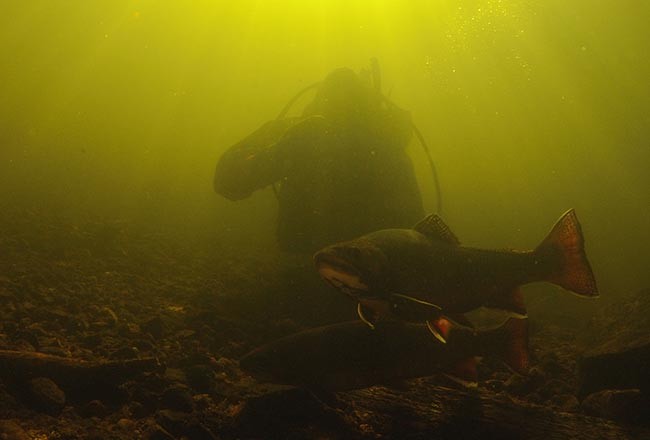
The first documented reports surfaced in the mid-1990s, sending waves of concern up and down the chain of Rangeley Lakes in western Maine: smallmouth bass – illegally introduced into Umbagog Lake – had moved into the mouth of Rapid River.
The Rapid had survived as one of the finest wild brook trout fisheries in the United States. Connecting Lower Richardson Lake in the east to Umbagog in the west, the river is notoriously inaccessible, rocky, and fast-flowing, with the sharpest elevation drop of any river east of the Mississippi without a waterfall. Its drops and pools had long attracted fly fishermen from around the globe in search of trophy-sized fish. While rumor of the invasive species rippled out, those fishermen increasingly – some of them incredulously – found bass in Rapid River pools that were famous for trout. By 1998, the bass had reached Hedgehog Pool in the lower river. Within a couple of seasons, they’d migrated up through Smooth Ledge, Cold Spring, and Long Pool, and colonized Pond in the River, the natural, 512-acre pond that divides the Rapid into its upper and lower reaches. The fishermen knew the implications.
Rapid River had been an amazingly resilient fishery. The genetic strain of brook trout in this drainage had survived – even thrived – for millennia. Even through the nineteenth century, when sport fishermen filled their coolers and market fishermen slaughtered trout by the ton using seine nets and spears, the wild trout held on. Companies constructed outlet dams to sluice logs for the spring log drives and to hold water back for mills downstream on the Androscoggin, shutting off the once-free passage that Rapid River trout had for moving up into the cold water thermal refuge areas they’d depended on in summer in upstream lakes, especially the Richardson Lakes. Loggers dynamited and straightened riverbanks, and still the wild trout held on. Their key forage fish – blueback trout, a type of Arctic char – was fished to extinction by 1905, by which time six non-native species had already been introduced into the watershed, including landlocked salmon (to bolster the sport fishing) and smelt (to replace the disappearing bluebacks as forage). The brook trout took a crippling hit from the increased competition and diminished food supply. The legendary giant fish disappeared. But the wild trout survived in smaller numbers.
Late in the twentieth century, the fishing started falling off when the forestland around the river opened up. Logging roads were built close enough that fishermen could now drive most of the way to a river that historically had been accessible only by water. The number of kayakers and rafters finding their way to the Rapid had exploded. On weekend afternoons a fisherman might walk the footpath down to Smooth Ledge and find he was sharing the pool with 40 boaters pulled out on shore. How was all that boat traffic affecting the fish? Alongside concerns about acid precipitation and a warming climate, the fishery suddenly seemed fragile. With the news that the illegal Umbagog bass had colonized Rapid River’s entire length, concern turned to anger, and to panic.
“The big brook trout that anglers are catching now are three to four years old,” said Forrest Bonney, then a biologist with the Maine Department of Inland Fish and Wildlife, to a newspaper reporter. He knew that trout rarely live longer than five years – and that once those large trout had died off, there was every chance that bass would predate or outcompete the smaller trout, preventing them from reaching the mature ages and sizes that had made the fishery’s catch famous. Whitney Carter, owner of Lakewood Camps near Middle Dam, worried that the Camps’ longtime clientele would be forced to look farther north for four- and five-pound brook trout. To Quebec, he figured, and Labrador.
The panic was warranted. The range of self-sustaining brook trout (Salvelinus fontinalis) once stretched southward along the ancient Appalachian Mountains from maritime Canada to northern Georgia. During precolonial times, thousands of cold water streams, lakes, and ponds satisfied the brook trout’s narrow requirements for dissolved oxygen and pH; clean, clear water; sufficient shade; silt-free rocky substrates; and spawning sites of gravel over upwelling groundwater. With such sensitive tolerances, brook trout turned out to be a telling indicator species for the health of entire watersheds: silt runoff from cleared land, raised water temperatures from loss of canopy cover, pollution from upstream mills, and impacts from nearly every other human and industrial activity near population centers had devastated one watershed after another. By 1850, anglers from Boston to Philadelphia, accustomed to fishing for trout in nearby waters, were traveling farther afield for their sport to the Catskills or the Adirondacks, or especially – as word spread of huge brook trout weighing a dozen pounds or more – to the Rangeley Lakes region of western Maine.
Fishing, and in particular fly-fishing, came to define the character and economy of these remote forested headwaters of the Androscoggin River. Hotels and sporting camps sprang up, catering to well-heeled “sports” from away who arrived by train and paid their guides handsomely to put them onto trout water at the right time with the right fly. Grant’s Kennebago Camps. Upper Dam House. Rangeley Lake House. Sunset Lodge and Cabins. Lakewood Camps at Middle Dam. The names filled popular angling magazines and became known in fishing circles as far away as Europe and New Zealand. The image of the registered Maine Guide, pulling the oars of a double-ended Rangeley guide boat, or pointing to the sweet spot at the tail of a pool as a sport swung a Grey Ghost streamer designed by the famous fly-tier Carrie Stevens, were captured by artists and became iconic. Louise Dickinson Rich, writing from her backwoods “Forest Lodge” on Rapid River, popularized the romance and hard beauty of the region in We Took to the Woods, which became a bestseller.
And meanwhile, self-supporting brook trout populations disappeared across 95 percent of their historic range. What native trout remained were relegated to the remote rivers of Maine or to extreme headwaters holding small fish. Entering the twenty-first century, intact brook trout populations remained in 185 sub-watersheds in Maine, but in only six sub-watersheds across the 16 other states, combined, where they had once flourished.
Like most of the wild trout’s waters in the state, Rapid River had survived in large part because of its remoteness, being surrounded by commercial timberland in the interior highlands, far away from roads and farms and industry. The warming water temperatures and decreased levels of dissolved oxygen responsible for degrading a huge majority of wild populations elsewhere weren’t significant dangers here. Unlike in every other region down through the Appalachians, the largest threat to brook trout identified by biologists in Maine had nothing to do with habitat. It was the spread of non-native fish – invasive species that competed with brook trout for food and habitat and preyed on trout fry. At the top of their list was an aggressive, prolific gamefish native to the Mississippi River basin and the St. Lawrence River/ Great Lakes system: Micropterus dolomieu. Smallmouth bass.
Anatomy of a Blue-Ribbon Trout Stream
If there was anything lucky about the timing of the bass migration from Umbagog into Rapid River, it was its coincidence with the 2002 dam relicensing facing Florida Power & Light (FPL), the utility that controlled the flows out of Middle Dam at the head of the river. Multi-decade hydroelectric dam licenses had become a controversial, highly scrutinized environmental issue in Maine and across the country. To renew its license to continue operation, FPL needed to comply with state and federal standards that took into account the dam’s effect on water quality, recreational experience, and, on this river, the protection of a historic, world-class native brook-trout fishery. The schedule of the dam’s releases, its minimum flow requirements, and its plans for future expansions or modifications could no longer be settled by economics or politics alone. They needed to be justified by science.
By the time bass had moved into the river in the late 1990s, Bill Hanson, the utility’s chief biologist, along with Forrest Bonney and Dave Boucher, Rangeley Lakes regional biologists for Maine’s Department of Inland Fisheries and Wildlife, had already begun the foundational work of documenting what made the Rapid River fishery special. They had measured water flows and temperatures, recorded depths, and catalogued forage fish. They’d interviewed longtime fishermen and made underwater dives and snorkel surveys. They’d conducted creel surveys and angler counts. In 1994, they had put a number to the pressure on the fishery: 4,000 to 5,000 angler visits in a single season, confirming the Rapid as one of the most heavily fished rivers in the state. Even before the bass showed up, before the license decision was due, Bonney had learned enough to advocate for a new, strict catch-and-release policy for all trout in Rapid River. The regulation went into effect in 1996, and its impact on the fishery was immediate. But two years later, they realized that the same big fish that had been protected by the catch-and-release regulation were being taken wholesale during the winter through the ice downriver at Umbagog Lake. Ice fishing was closed on that part of the lake, and the trophy fishing in the river rebounded dramatically. The requirement of barbless hooks was added to the fly-fishing-only restriction to reduce the mortality of hooked-and-released fish.
With the smallmouth bass came urgency. “As soon as we knew the bass were there, we needed to pull out all the stops,” Boucher recalled. “We needed to do everything we could do for the benefit of the brook trout, and to do that, we needed to know more.” He and Hanson enlisted a small army in the battle: biologists, sportsmen, conservation organizations, citizen scientists, graduate students, and consultants with Kleinschmidt Associates, a company with expertise in environmental engineering. Funding came in from Trout Unlimited, from the Maine Outdoor Heritage Fund, the Rangeley Lakes Heritage Trust, Rangeley Region Guides and Sportsmen, Orvis, the Umbagog National Wildlife Refuge, the University of Maine, and Dartmouth College. The result was unprecedented: Rapid River became the most intensively studied brook trout fishery in the world.
The biologists were able to identify different-aged fish up to five years old, and discovered that almost all the spawning fish were either four or five years old. Genetic testing revealed a strain of trout that retained its distinct lineage in the Kennebago River and Upper Androscoggin River drainage. The river itself contained what biologists called highly productive substrates (essentially lots of rocks, with lots of surface area where insects could breed), well-aerated water, and a series of deep pools up and down the river, with plenty of natural obstructions and hiding places. No significant cold tributaries fed into the river, but small natural seeps cooled the shallow water in several places, and these were critical for yearling fish.
Seven Islands, the land managers responsible for timber in the area, had kept its logging operations well back from the river in its harvesting plans. Earlier logging crews had altered the riverbanks with small, occasional “wing dams” that kept logs flowing in the main channels, but the Rapid’s inaccessible location had saved it from the large-scale bulldozing and straightening that had severely damaged the riparian health of so many other rivers in the region, notably the Dead Branch of the Diamond River, the Sandy River, the Sunday River, and the Dead River. In 2004, protection of the shoreline became permanent. As part of the dam-relicensing agreement, the Rangeley Heritage Trust was granted a conservation easement on a 165-foot strip of land surrounding Pond in the River and along both sides of Rapid River. Boucher called these events “a perfect storm for brook trout,” and he meant it in a good way.
In 2002 and 2003, using radio telemetry to track 30 large brook trout, the biologists made startling discoveries. The trout fed voraciously along the length of river between ice-out and the end of June, experiencing almost all their year’s growth in that short growing season. As the temperatures warmed in July, except for a few trout dropping down into the north basin of Umbagog, every tagged adult moved up into Pond in the River and found thermal refuge over a single spring hole. When lower water temperatures returned in September, the trout moved back into the river and staged for the spawning season. Twenty-five of the thirty tagged fish bailed into one deep trough not far downstream from the remnants of the old Lower Dam, within sight of Forest Lodge, where Louise Dickinson Rich had done her writing. Hanson led a diving team over the spawning bed, and estimated 50 to 75 three- and four-year-old spawning trout in that one hole. They discovered only a few other small spawning beds in the rest of the river.
In stark contrast with western rivers that boast big trout in the thousands per mile, that small number of big adults on the Rapid was solely responsible for the river’s reputation as blue-ribbon water. Fishermen were catching and releasing the same handful of trophy-sized individuals over and over. It wasn’t surprising that the catch-and-release regulation turned out to be critical in sustaining the river’s reputation.
The team discovered that the extraordinary hydraulic structure between Lower Dam and Long Pool supported the most important part of the fishery. In addition to finding the main spawning trough, they found several stretches of near-ideal fry-nursery habitat, which some of the biologists believed was even more critical to the trout’s survival than the spawning habitat.
Boucher helped push through new rounds of regulations, which closed this entire section of river to fishing after September 15, to protect the spawning fish from incidental hooking injury and mortality. Knowing how damaging it would be to exploit the trout seeking refuge in Pond in the River, Boucher helped close the entire pond to fishing in July and August to protect the trout during their most stressed time of the year.
The results, in terms of the fishing, were nearly instantaneous. Almost overnight, the fishing swung back toward the big brook trout the river had become famous for.
Invasion of the Smallmouth
Once the baseline ecology of the river was established, biologists turned their attention to understanding how brook trout and smallmouth bass interact within a closed watershed – and they fretted about the presence of the bass. Boucher’s department, systematically going about the science, got pressure from local guides and fishermen to take definitive action. At one public meeting, Boucher heard someone from the back of the room shout, “We can send a man to the moon! Why can’t we fix the bass problem in this river?” Some suggested using a fast-degrading, broad-spectrum poison like Rotenone to reclaim the whole river. Many others raised the idea of electroshocking the bass.
Boucher looked into both options, but neither turned out to be feasible. The largest pond ever reclaimed by the state of Maine was about 200 acres. Most successful reclamations had occurred in ponds no larger than 20 acres, ponds with natural barriers and no tributaries. The idea of poisoning a 500-acre pond connected to some three-and-a-half miles of complex river running into the 7,850-acre Lake Umbagog – killing not only the bass but also the trout and every other gill-breathing fish and amphibian in the system – had no hope for success and would cost millions of dollars.
The bass nests in Pond in the River looked established – for good, Boucher came to believe. He had dived and explored most of Pond in the River with a graduate student from Cornell named Brian Weidel, who had previous experience electroshocking bass in a similarly invaded trout pond in the Adirondacks. In that project, intensive shocking had dramatically reduced the bass numbers, as hoped for, only to see the bass rebound with a vengeance two years later. It turned out that the electroshocking had improved conditions for recruitment and inadvertently led to an explosion in the overall bass population. And, unlike the Rapid, that pond wasn’t interconnected with a complex river system. Weidel told Boucher he had never seen more ideal bass habitat than what he’d seen in Pond in the River. Those bass were there to stay.
The bass nests in Rapid River itself were a different story. Though stomach sampling in 100 bass revealed very little predation on brook trout fry, predation figures for other water bodies in the state were high, and the locations of bass nests in several spots in the Rapid dangerously overlapped key nursery areas for the young trout. As far as Boucher could figure, about 50 percent of those bass nests looked vulnerable to fast-changing water levels. The rest were too well protected. (“Half of them are bulletproof,” Boucher said.) He consulted fisheries biologists in West Virginia, who had faced similar circumstances. They had worked in the other direction with dam operators on hydraulic releases that would please the bass fishermen – not to discourage the nesting bass, but to minimize the impacts that increased flows would have on them. Boucher learned from their research and outlined a plan to do just the opposite. The few weeks’ difference in the life cycles of brook trout and bass would give the trout fry a head start: they could survive a pulsed flow of 1,200 cubic feet per second, while the bass eggs or bass black fry emerging at the end of June would be swept downstream, off their nests. And the most vulnerable time for the bass could be predicted almost like clockwork. The flows could be timed to target the bass without fear of hurting the trout. The irony wasn’t lost on Boucher. A man-made dam, the bane of wild trout everywhere, would be an important weapon in the war against the Rapid River trout’s greatest enemy.
And so it came to this: With all the research at the state’s disposal and all the time and money and attention devoted to figuring out how best to manage a wild fishery, two tools might make the difference: regulations and flow rates. The guides, the fishermen, and the sporting-camp owners understood. The utility managing the releases at Middle Dam was agreeable. The state set a new management plan into action. Dave Boucher said, “My job is like a forester’s: do the right thing now, and impose the things that you can hope to control, which aren’t very many. This thing between bass and brook trout will play out over a very long period of time. We won’t know for 40 years, maybe more.”
By 2005, annual fisherman counts reached 8,000 angler trips in a single season, nearly double the number from ten years earlier. But that was the high-water mark. Whether because of bad publicity surrounding bass in the river, or a general trend in the sport, or maybe fishermen choosing the improving stocked brown- and rainbow-trout fishing on the more accessible upper Androscoggin River, the pressure on the Rapid in the past few years had fallen back to 1994 levels. Rafting and kayaking numbers had plummeted.
The tight fishing regulations on brook trout have stayed in place while length and bag limits have been relaxed further on landlocked salmon. “We’re trying to encourage fishermen to take more salmon,” said Boucher, “to give the trout a little less competition. But everyone fishing here seems to have internalized the catch-and-release ethic. It’s frustrating.” Fishermen are encouraged to keep or kill as many bass as they can catch.
The periodic pulsed dam releases, timed to move spawning bass or black fry or egg sacs off the spawning nests, were not written into the new license at Middle Dam; at this time, that remains entirely voluntary on the part of the dam’s new owner. So far, the utility has been willing. There is evidence that the pulsed flows are making a difference.
Average trout sizes have slowly started to come back. Longtime guides such as Aldro French and Kris Thompson both say the fishing today produces more salmon than it did many years ago, but that the big trout have hung in there despite the bass. Reports of the disappearance of four- and five-pound trophies were premature. The insect hatches are still strong.
Dave Boucher moved from the Rangeley Lakes Region to the capitol in Augusta, where he became the state’s fisheries management supervisor. Sadly, he didn’t get the chance to watch his efforts on the Rapid play out over the long term. Boucher died from a heart attack in March of 2016 at the age of 56. But the outreach and education that he devoted many long years to regarding the danger of moving and introducing non-native fish has been a success. While smallmouth and largemouth bass, perch, pike, and black crappie continue to be introduced illegally into new bodies of water every year in other parts of the state, no new fish have appeared in any watershed of the Rangeley Lakes.
That may be a crucial legacy.
Biologists in Maine believe the current balance may be sustainable. There’s little precedent for brook trout and bass coexisting elsewhere in the state, but for now – for the guides and the sports and the sporting camps, for the local economy, for the ongoing, living heritage of the Rangeley Lakes region – the news is hopeful. Though in the end, those interests may all be beside the point. These Rapid River trout, nearly the last of their kind in the United States, are remarkable, magnificent creatures. They’re worth saving for their own sake, for the sake of magnificent nature.


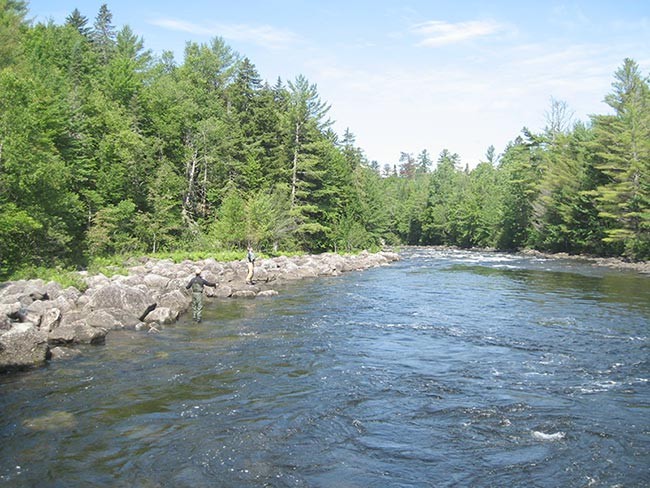
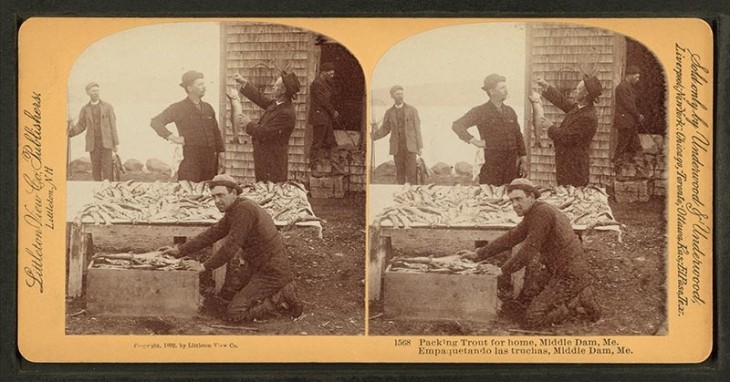
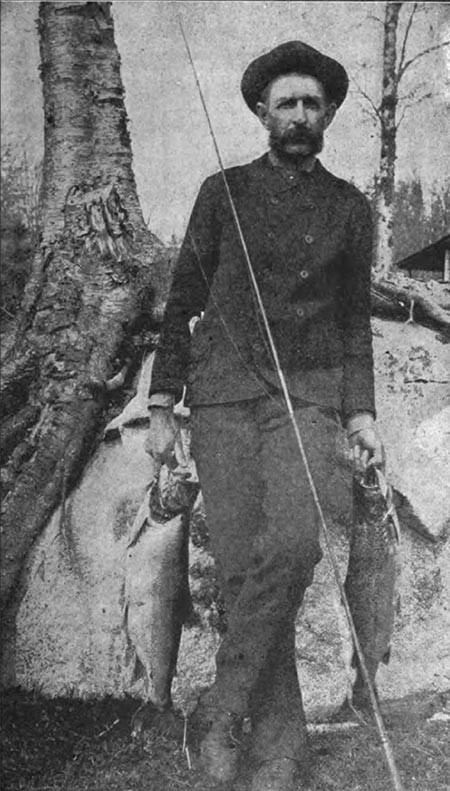
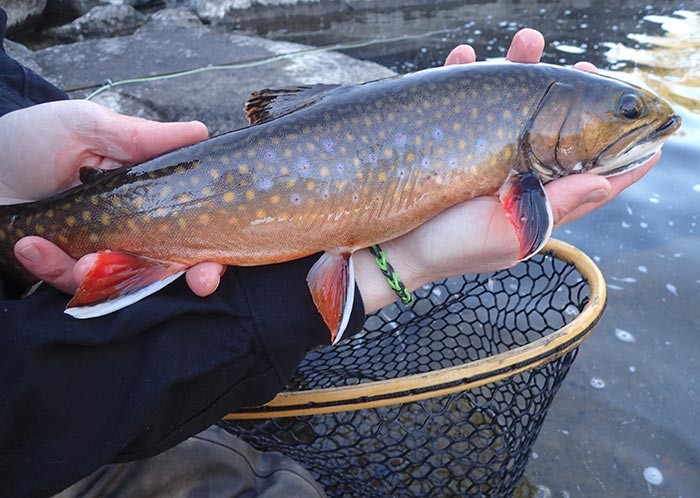

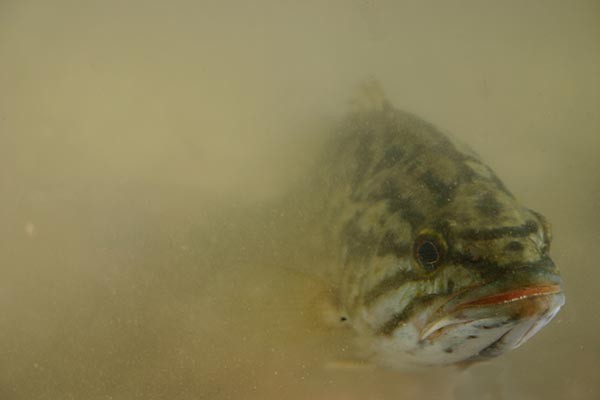
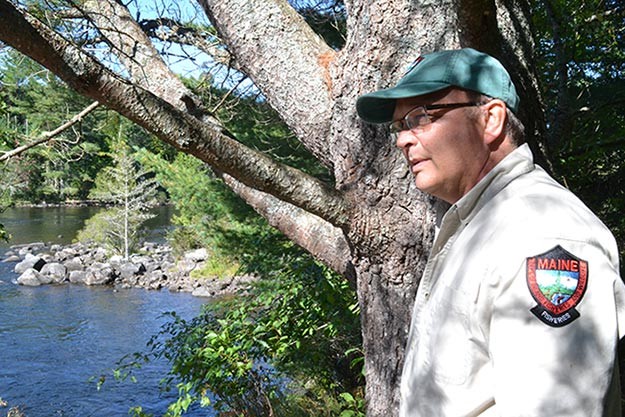
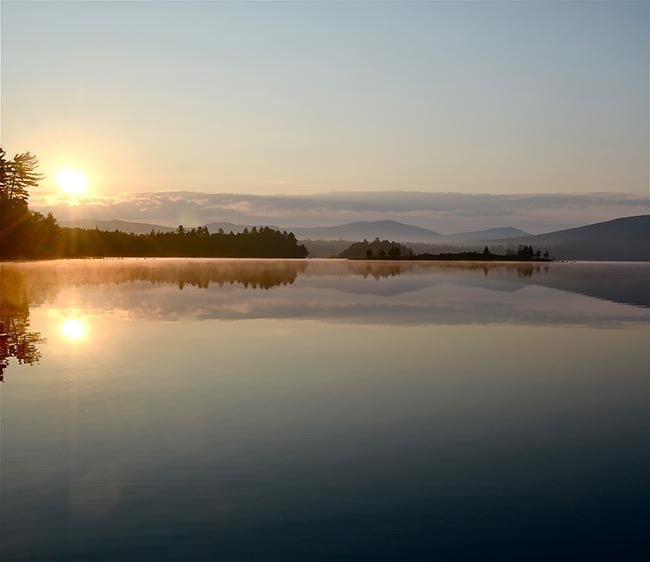
Discussion *